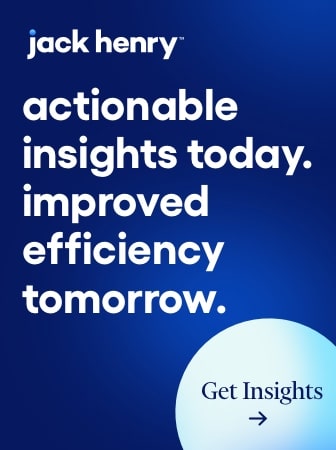Communicating in the new frontier of hybrid work can be tricky. Between coordinating which days workers are in the office and at home, managing a full inbox and checking internal instant messaging apps — employees at organizations of all sizes are experiencing communication overload.
Combine this with the differing communication styles of the four generations (Baby Boomers, Gen Xers, millennials, and Gen Zers) currently in the workplace, and you may have a recipe for disaster.
“In terms of the communication styles amongst different generations, the differences have been magnified in our remote hybrid world. Specifically when it comes to communicating across different technologies,” said Jenna Rogers, workplace communications expert and founder of Career Civility.
Bank marketing teams have a particularly hefty challenge. More than 70% of marketing staffers are below the age of 45, according to data from MarketingWeek. By comparison, members of the C-Suite tend to skew older, with the average age of CEOs across all industries being 59, according to data from Korn Ferry.
Understanding how each employee on your team communicates is key to having a staff full of happier, more effective employees. All you have to do is ask the right questions, says Reggie Willis, head of diversity, equity, and inclusion at Ally Bank.
“Many times it’s about asking the right questions and respecting the answers and not trying to convert someone to your communication style,” he says. “Understanding that at times, you’re going to have to flex and bend.”
Here’s how bank executives can foster open and inclusive communication between the different generations in the workforce.

Navigate And Win The Branch Transformation Race
Learn how to navigate and win over customers with the right branch transformation. Listen to JP Lacroix and Marbue Brown discuss strategies, insights, and more.
Read More about Navigate And Win The Branch Transformation Race

Improve Your Business Outcomes Through Data & Analytics
Gain centralized access to the credit bureaus and 20+ alternative data sources. Leverage advanced analytics to optimize marketing campaigns and loan decisions.
Read More about Improve Your Business Outcomes Through Data & Analytics
Getting to the Root of the Problem
When executives hire Malika Begin, an executive consultant and the owner of Begin Development, to ask for help on their teams, there’s usually a pressing issue that is impacting the bottom line.
“It depends on what their challenges are, there’s usually a presenting problem,” she says. “I don’t have anyone that comes to me and says we want to have more open communication. It’s usually something like ‘We’re not attracting the best talent or we have a retention problem.'”
When Begin starts working with these teams, she often discovers that communication troubles play a part in many deeper rooted problems. The first step is simply asking your team how they prefer to give and receive feedback. Some companies have workers complete a “How to Work with Me Manual” to specify exactly how and when they prefer to be engaged with.
“Many times it’s about asking the right questions and respecting the answers and not trying to convert someone to your communication style. Understanding that at times, you’re going to have to flex and bend.”
— Reggie Willis, Ally
But the first step is disseminating a survey to your team to gather some feedback on overall communication styles, Begin says. This can be a great way to get some data on how employees prefer to give and receive feedback in the workplace.
“It can be a really powerful neutral starting point,” she says. Begin recommends exploring options like CliftonStrengths, a talent assessment provided by Gallup, which can be a way to start unraveling your team’s strengths and weaknesses.
“I think it starts with self knowledge,” she says. “You have to know who you are and what you’re bringing to the table.”
Read more:
- How to Navigate the Coming Storm of Demographic Disruption
- Why AI Isn’t Coming for Your Banking Job
- Banking on Change [A James Robert Lay book excerpt]
Avoid Stereotypes But Understand Differences
It’s easy to stereotype a specific worker because of the year they were born, but remember that generations reflect vast diversity. So it’s important to get to know the workers on your individual team before assuming that they prefer one style of communication over another.
“There’s a lot of value and great things that each generation has to offer,” Willis says. “The reason we have decided to use generations for a lot of it is around census building to accumulate information, but it still boils down to the individuals. Take the opportunity to appreciate the individuals, I know a lot of older people who are young at heart, and vice versa.”
However, managers should still understand basic differences between how generations like to communicate. For example, younger generations may gravitate toward text-based communications while older generations prefer to communicate face-to-face. But before you assume that someone communicates in a particular way, simply asking is a best practice.
“It is about asking some simple questions and being respectful about how people prefer to engage,” Willis says.

Appreciate the Unique Skills of Your Team Members
Each generation also brings different skills to the table, Rogers says. Baby Boomers who have served in their roles for a long time may have more institutional knowledge than a newly hired Gen Zer. By comparison, Gen Zers may bring a fresh perspective to the company culture.
Each generation has also lived through big events that shape their worldview. For example, many Gen Zers began their first jobs during the Covid-19 pandemic. Generations often have a historical event that shaped their worldview, Willis says. Good leaders need to be cognizant of — and appreciate — these differences.
“I think in order to be a good leader now, you’ve got to be adaptable,” Willis says. “You’ve got to not only appreciate, but celebrate, the differences that people bring to get better outcomes.”
It’s important to remember that workplace communications is not an exact science, and there are bound to be hiccups along the way. But the more that workers can be patient with each other, the more it will foster an inclusive culture. It’s important to appreciate each worker for their individual strengths, and acknowledge that most people, regardless of generation, may be more alike than they are different.
“At some level, people are people,” says Bryan Hancock, global leader at McKinsey’s Talent Work in a podcast on this topic. “They want to have meaningful work. They want to have real connections with their coworkers and their managers; they want what they’re doing to have broader purpose; they want to be fairly compensated.”
Rogers always reminds managers to be curious about the experiences of their team members to figure out ways that they can better support each other. It’s important to recognize the lived experiences of other people and acknowledge how that can impact workplace communication styles.
“Be patient,” Rogers says. “We all have different communication styles and different personalities that can be frustrating to work with. Change takes time, learning about each other takes time.”







